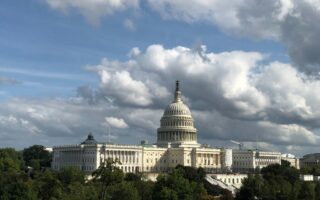New FFCRA Regulations from the DOL
By Kevin M. Mosher • Sep 17, 2020
As we mentioned a few weeks back, a federal court in New York struck down portions of the Department of Labor’s (DOL) regulations governing the Families First Coronavirus Response Act (FFCRA). The DOL published revised rules and regulations in response to the ruling, and these revisions went into effect September 16, 2020. The revised rules and regulations address four major issues: (1) the work-availability requirement, (2) required employer approval for intermittent leave, (3) the definition of “health care provider” for purposes of exemption from entitlement to FFCRA leave, and (4) notice and documentation requirements.
Work Availability Requirement
The DOL’s revised regulation provides that an employee may only take FFCRA leave if the qualifying reason for leave is the but-for cause of the employee’s inability to work. This means that the sole reason the employee isn’t working is because they’re experiencing a qualifying reason for FFCRA leave. This does not mean an employer can deny an employee’s request for FFCRA leave because the employee would have had a light to-do list. It simply means that, if the employee wouldn’t have been going into work regardless (for example: the business is closed; the employee is temporarily laid off; the employee would not have been scheduled to work), then the employee is not eligible for FFCRA leave.
Required Employer Approval for Intermittent Leave
The revised rule reaffirms the DOL’s position that employees must receive approval from their employer to take FFCRA leave intermittently. For one, intermittent leave would be harmful when employees are infected with COVID-19, caring for an individual infected with COIVD-19, or have received medical advice to self-isolate for reasons relating to COVID-19. The DOL also referred to the longstanding principle of intermittent leave under the Family and Medical Leave Act (FMLA) that such leave should, where foreseeable, avoid unduly disrupting the employer’s operations. Employers should be flexible with employees who request intermittent FFCRA leave while teleworking.
Definition of “Health Care Provider” for Purposes of Exemption from Coverage
The DOL has revised its definition of health care provider to focus on the job duties of the employee rather than the identity of the employer. The new rule defines “health care provider” as employees who fall under the FMLA definition of health care provider and employees who are capable of providing health care services, meaning they are employed to provide diagnostic services, preventive services, treatment services, or other services that are integrated with and necessary to the provision of patient care, that if not provided would adversely impact patient care.
Basically, it boils down to whether the employee is involved in patient care. If the employee is doing anything that directly or indirectly assists physicians, nurse practitioners, psychologists, etc. perform diagnostic, preventative, or treatment services, then they are probably a health care provider under the new rule, and the employer can exempt them from entitlement to FFCRA leave. This includes nurses, nurse assistants, medical technicians, lab technicians, and more. However, employers should be hesitant to exempt employees who serve in the health care industry from coverage if the employee does not perform work associated with diagnosing, treating, or preventing illness. If the employee is serving in a job that is not specific to patient care and could be found in any sort of office, like an HR professional, accountant, janitor, receptionist, etc., then they aren’t a “health care provider” and therefore are entitled to FFCRA leave.
**This does not change the definition of “health care provider” for purposes of receiving advice from a health care provider to self-isolate.
Notice and Documentation Requirements
The previous DOL regulations required employees to provide documentation supporting their need for FFCRA leave prior to taking the leave. In light of the court’s decision, the DOL revised the regulation to require employees to provide documentation supporting the need for leave as soon as practicable. Further, employers may only require that employees notify them of the need for FFCRA leave after the first workday for which the employee took FFCRA leave. However, employers can require advance notice of expanded FMLA leave when the leave is foreseeable.
Thompson Coe and myHRgenius Tip of the Week is not intended as a solicitation, does not constitute legal advice, and does not establish an attorney-client relationship.










